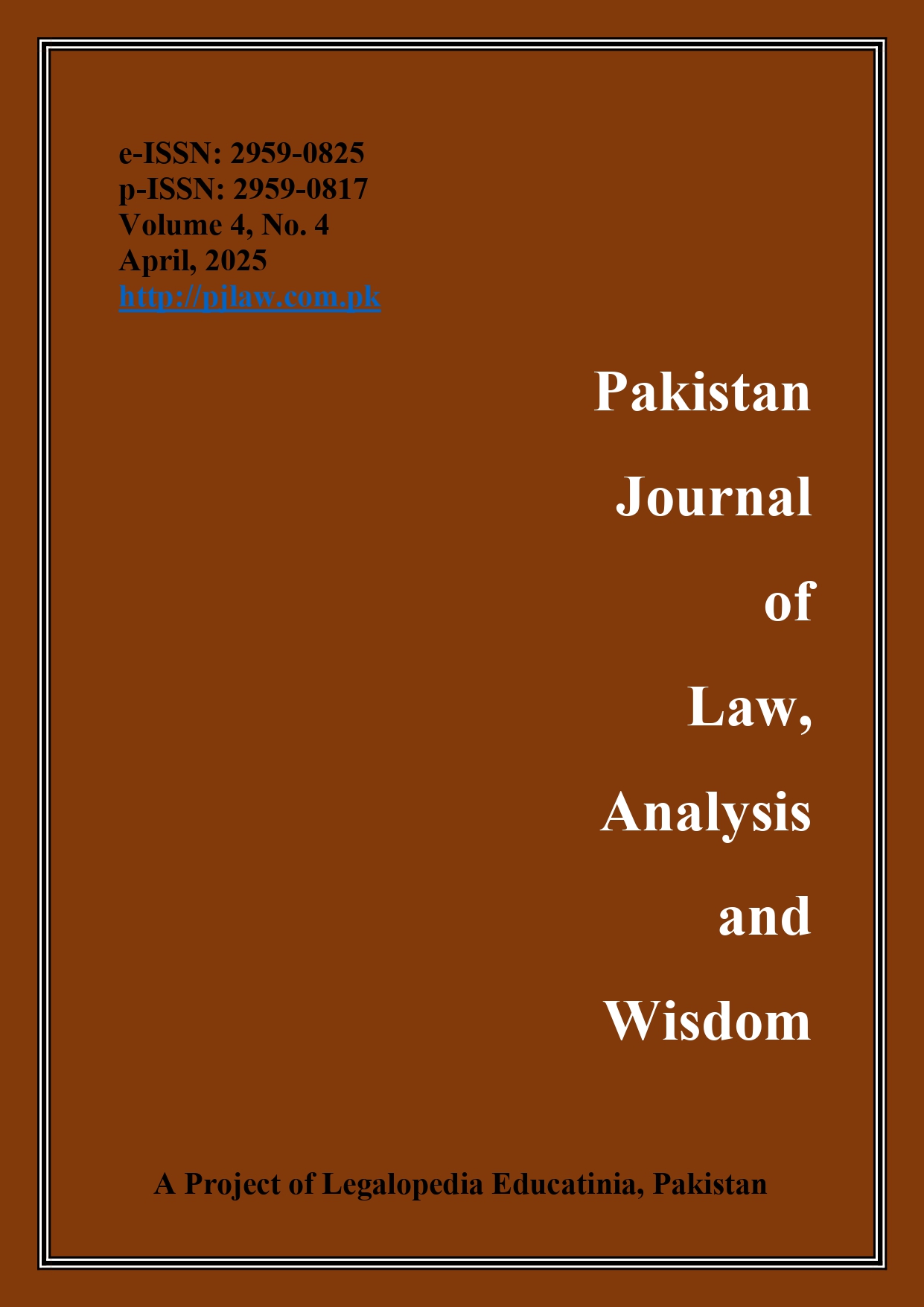FATF Listing Mechanisms: Geopolitical Dynamics, Fairness, and the Impact on Developing Nations
Keywords:
FATF, Listing Mechanisms, Geopolitical Influence, Fairness, Developing Nations, Terrorism Financing, Money LaunderingAbstract
The Financial Action Task Force (FATF) has emerged as a pivotal international organization in the global fight against money laundering and terrorism financing. Its listing mechanisms—the grey list and black list—are designed to encourage compliance with international standards for anti-money laundering (AML) and counter-terrorism financing (CTF). However, the application of these mechanisms has been subject to significant criticism, particularly regarding their fairness, transparency, and susceptibility to geopolitical influence. This article critically examines the structure and operation of FATF’s listing mechanisms, focusing on how geopolitical dynamics shape listing decisions and the disproportionate impact these decisions have on developing nations. The analysis draws on case studies of Pakistan, Iran, North Korea, and Myanmar, illustrating how powerful states such as the United States, the United Kingdom, and India have leveraged their influence within FATF to advance strategic interests, often at the expense of smaller or less influential countries. The article highlights the economic, diplomatic, and reputational consequences of grey and black listing, including restricted access to international financial markets, higher borrowing costs, reduced foreign investment, and reputational damage. These effects are particularly severe for developing nations, which often lack the institutional capacity and diplomatic leverage to counterbalance the pressures exerted by dominant states. The article also explores the challenges faced by listed countries in implementing FATF’s recommendations, including bureaucratic inefficiencies, weak inter-agency coordination, and the persistence of informal financial channels. It critically assesses the perceived double standards in FATF’s approach, noting that countries with strategic alliances or economic influence are rarely subjected to the same level of scrutiny as less influential states. Finally, the article offers recommendations for reforming FATF’s listing mechanisms to ensure greater transparency, objectivity, and support for developing nations, thereby strengthening the global fight against illicit finance.
References
Asia Pacific Group on Money Laundering (APG). (2019). Mutual Evaluation Report: Pakistan. https://www.apgml.org
Financial Action Task Force (FATF). (2012). International Standards on Combating Money Laundering and the Financing of Terrorism & Proliferation. https://www.fatf-gafi.org/publications/fatfrecommendations/documents/fatf-recommendations.html
Free, M., & Ruehsen, M. (2013). Terrorism financing methods: An overview. Perspectives on Terrorism, 7(4), 5–26. https://www.jstor.org/stable/26296906
Government of Pakistan. (1997). Anti-Terrorism Act, 1997. https://www.na.gov.pk/uploads/documents/1348730313_910.pdf
Government of Pakistan. (2010). Anti-Money Laundering Act, 2010. https://www.fmu.gov.pk/documents/AML_Act_2010.pdf
Koh, J.-M. (2006). Suppressing terrorist financing and money laundering. Springer.
Mehmood, M. (2022). Financial Action Task Force’s Special Recommendations on Terrorism Financing: A Critical Study (Unpublished LL.M. thesis, International Islamic University, Islamabad). https://ppl-ai-file-upload.s3.amazonaws.com/web/direct-files/attachments/61766274/2623d527-2d6a-4c23-9fb9-f6938391077c/Thesis-Muhammad-Mehmood-Reg.-183-FSL-LLMITL-F-17.docx
Securities and Exchange Commission of Pakistan (SECP). (2018). Anti Money Laundering and Countering Financing of Terrorism Regulations, 2018. https://www.secp.gov.pk/document/aml-cft-regulations-2018/
State Bank of Pakistan (SBP). (2017). AML/CFT Regulations for Banks & DFIs. https://www.sbp.org.pk/amld_cft/AML-CFT-Regulations-2017.pdf
Thony, J.-F. (2000). Money laundering and terrorism financing. Journal of Money Laundering Control, 4(2), 164–177. https://doi.org/10.1108/eb027280
United Nations Security Council. (1999). Resolution 1267 (1999). https://undocs.org/S/RES/1267(1999)
United Nations Security Council. (2001). Resolution 1373 (2001). https://undocs.org/S/RES/1373(2001)
United Nations. (1999). International Convention for the Suppression of the Financing of Terrorism. https://treaties.un.org/doc/db/Terrorism/english-18-11.pdf
World Bank. (2009). Reference Guide to Anti-Money Laundering and Combating the Financing of Terrorism. https://documents1.worldbank.org/curated/en/260971468150329125/pdf/489510WP0Refe10Box338914B01PUBLIC1.pdf
Downloads
Published
Issue
Section
License
Copyright (c) 2025 Muhammad Mehmood

This work is licensed under a Creative Commons Attribution-NonCommercial 4.0 International License.











 LEGALOPEDIA EDUCATINIA (PVT) LTD
LEGALOPEDIA EDUCATINIA (PVT) LTD